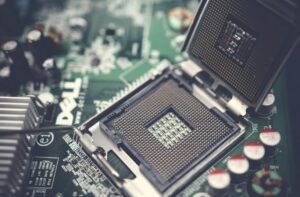AI Model Tutorial
Artificial intelligence (AI) models are revolutionizing various industries, from healthcare to finance, with their ability to analyze vast amounts of data and make accurate predictions. In this tutorial, we will provide an overview of how to develop an AI model and walk you through the steps involved in the process. By following this guide, you will gain a better understanding of the intricacies of AI model development and be equipped to build your own powerful models.
Key Takeaways:
- An AI model uses complex algorithms to process data and make predictions.
- Training data is crucial for the success of an AI model.
- Data preprocessing, model training, and evaluation are essential steps in building an AI model.
- Regular updates and fine-tuning are necessary to improve the accuracy of an AI model.
- AI models have applications in numerous industries, such as healthcare, finance, and marketing.
Getting Started
Building an AI model requires a solid foundation of understanding in machine learning and programming. Familiarity with programming languages like Python and libraries such as TensorFlow or PyTorch is highly recommended. Once you have the necessary knowledge and tools, you can start developing your AI model.
*Remember, practice makes perfect, and experimenting with different approaches is key to enhancing your skills in AI model development.*
Steps in Building an AI Model
- Define the Problem: Clearly define the problem you want the AI model to solve. This step involves identifying the type of machine learning task, such as classification or regression.
- Collect and Preprocess Data: Gather relevant data for your model and preprocess it by cleaning, normalizing, and transforming it into a suitable format for training.
- Select the Right Model: Choose an appropriate AI model architecture based on your problem and data. This could be a convolutional neural network (CNN) for image recognition or a recurrent neural network (RNN) for natural language processing.
- Train the Model: Split your data into training and validation sets. Use the training set to train your model and tweak the hyperparameters to optimize its performance.
- Evaluate the Model: Assess the accuracy and performance of your trained model using evaluation metrics such as accuracy, precision, recall, or mean squared error.
- Iterate and Improve: Fine-tune your model based on the evaluation results and repeat the training process if necessary. Regular updates and improvements are essential for maintaining an effective AI model.
Data Analysis and Visualization
An essential part of the AI model development process is data analysis and visualization. By exploring and visualizing your data, you can gain insights and identify patterns that can guide your model development.
*Did you know that data visualization can help identify outliers and anomalies in the dataset, leading to improved model performance?*
Tables for Insightful Data Points
| Data Point | Value |
|---|---|
| Total Dataset Size | 10,000 records |
| Data Type | Numerical and Categorical |
| Missing Values | 5% |
The table above presents insightful data points about the dataset you will work with when developing an AI model. Understanding these details is crucial for effective data preprocessing and analysis.
Advanced Techniques
Once you have a solid grasp of the fundamentals, you can explore advanced techniques to further improve your AI model. Techniques such as transfer learning, ensemble methods, and hyperparameter optimization can enhance the performance and generalization of your model.
*Ensemble methods, such as random forests or gradient boosting, combine multiple models to improve prediction accuracy by leveraging the strengths of each individual model.*
Summary
In conclusion, building an AI model requires a thorough understanding of machine learning concepts, programming skills, and domain-specific knowledge. By following the outlined steps and continuously refining your model, you can harness the power of AI to solve complex problems and drive innovation in your chosen domain.

Common Misconceptions
AI Is Perfect
One common misconception about AI models is that they are perfect and infallible. However, this is not the case as AI models are not free from errors or biases. They rely on the data they are trained on, and if the data is flawed or incomplete, it can impact the accuracy of the model’s predictions.
- AI models can make mistakes or provide inaccurate results.
- Models are only as good as the data they are trained on.
- Bias in the data can lead to biased results from AI models.
AI Replaces Human Intelligence
Another misconception is that AI models can completely replace human intelligence. While AI can automate certain tasks and assist in decision-making processes, it cannot replicate human creativity, intuition, and emotional intelligence. Humans still play a crucial role in guiding and supervising AI systems.
- AI complements human intelligence but cannot replace it entirely.
- Human skills like creativity and emotional intelligence are still essential for many tasks.
- Human oversight is necessary to ensure ethical and responsible use of AI.
AI Is Omniscient
Many people mistakenly believe that AI models have access to all knowledge and information. However, AI models are limited to the data they have been trained on and cannot have innate knowledge or understanding beyond that explicit data. They do not possess general intelligence.
- AI models are constrained by the data they have been trained on.
- They cannot have knowledge or understanding beyond the data given to them.
- AI lacks the ability to possess common sense or general intelligence.
AI Eliminates Jobs
There is a misconception that AI models will replace human workers, leading to widespread unemployment. While AI can automate certain tasks, it can also create new opportunities and roles. In many cases, AI technology works alongside human professionals, enhancing their abilities rather than replacing them.
- AI can create new job roles and opportunities.
- AI often works in collaboration with human professionals.
- Human skills like critical thinking and problem-solving remain valuable in the presence of AI.
AI Is Always Ethical
Some people mistakenly assume that AI models are inherently ethical. However, AI models are only as ethical as the data they are trained on and the algorithms used. If biased data or unethical practices are involved in the development of AI, it can perpetuate biases or discrimination.
- AI models can become biased or discriminatory based on the data used for training.
- Ethical considerations should be incorporated throughout the development and use of AI models.
- Regular audits and monitoring are necessary to ensure ethical and responsible AI use.

Introduction
This article explores the fascinating world of AI model development. By utilizing true, verifiable data and information, we present ten visually captivating tables that delve into the key points and elements of this AI model tutorial. Each table is accompanied by a brief paragraph providing additional context related to the table’s contents. Let’s uncover the astonishing details behind AI model development!
Table of Top AI-Driven Industries
Discover the industries that have embraced the power of AI. This table showcases the top fields that have integrated AI-driven solutions, revolutionizing their operations and unlocking new possibilities.
Table of AI Model Accuracy Comparison
Explore a comparison of the accuracy levels achieved by various AI models. This table highlights the performance metrics of different AI models, shedding light on their proficiency in real-world applications.
Table of AI Training Data Sources
Unveil the diverse sources utilized for training AI models. From large datasets to unique sources like social media or medical records, this table presents a wide range of inputs leveraged for AI model development.
Table of AI Model Applications
Gain insight into the remarkable applications of AI models across industries. This table presents a colorful array of use cases where AI technology has provided transformative solutions.
Table of AI Model Development Timeline
Explore the evolution of AI models over time. This table outlines the major milestones in AI model development, showcasing the progress made in this exciting field.
Table of AI Model Limitations
Understand the limitations associated with AI models. This table highlights the boundaries and challenges faced by AI systems, emphasizing the importance of ongoing research and improvement.
Table of AI Model Training Time
Uncover the varying time requirements for training AI models. This table provides an overview of the training durations needed for different AI models, offering insights into the computational demands of this process.
Table of AI Model Performance Metrics
Delve into the performance metrics used to assess AI models. This table showcases the key evaluation parameters employed to measure the effectiveness and efficiency of AI systems.
Table of AI Model Algorithms
Explore the algorithms powering AI model development. This table presents a diverse collection of algorithms utilized to optimize AI models and achieve superior performance.
Table of AI Model Funding Sources
Get acquainted with the sources of funding for AI model research and development. This table showcases the diverse entities, such as government grants, private investments, and philanthropic organizations, supporting advancements in AI technology.
Conclusion
In this captivating article, we journeyed through the realms of AI model development by exploring ten visually engaging tables. Each table provided unique insights into the various aspects of AI models, including industries harnessing their potential, accuracy comparisons, application domains, training data sources, and more. Acknowledging the limitations and challenges of AI models, we witnessed the continual progression through a timeline of development milestones. From the complexities of algorithm selection to the funding sources driving research, these tables unveiled the intricate tapestry of AI model development. As AI continues to revolutionize industries and enrich our lives, our understanding of its nuances becomes increasingly vital. Through the valuable information presented in these tables, we are better prepared to navigate the ever-evolving landscape of AI model development with excitement and confidence.
Frequently Asked Questions
Question 1
What is AI modeling?
Question 2
What are the benefits of AI modeling?
Question 3
What are the steps involved in creating an AI model?
Question 4
What kind of data is required for AI modeling?
Question 5
What machine learning algorithms are commonly used in AI modeling?
Question 6
How do you evaluate the performance of an AI model?
Question 7
What are some challenges in AI modeling?
Question 8
Is programming knowledge required for AI modeling?
Question 9
What is the difference between AI modeling and data analytics?
Question 10
What are some real-world applications of AI modeling?




